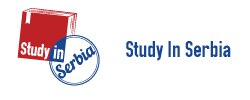
Blog
Key facts about the Serbian higher education system
KEY FACTS ABOUT THE SERBIAN HIGHER EDUCATION SYSTEM
If you want to learn a few facts about higher education in Serbia, keep on reading!

Admission rounds
The academic year in Serbia starts in October each year. Before that, there are admission intakes for all study levels. The first undergraduate intake takes place in late June and the beginning of July. Most spots are taken during this round. For the remainder of spots, there is usually the second undergraduate intake in late August/beginning of September. If you are going for the second intake, be prepared that the most popular study courses will be already full.
Exams
The school year in Serbia lasts 12 months, while classes are divided into two semesters: winter and summer. The beginning of the winter semester is usually 1st October. There are usually more than five exam periods; it will depend on the faculty or college. Some faculties even have eight exam periods per year, so do not be afraid that you will not have enough opportunities to pass the exams. During the school year, students have pre-exam assignments. After meeting all compulsory obligations related to pre-exam tasks, a student may take the exam.
Also, Serbia has been implementing the Bologna process since 2003, and it is part of the European Higher Education Area (EHEA). The EHEA is a framework to allow easy comparison between the higher education systems of all 49 participating countries.
Three-cycle system of studies
Being part of the European Higher Education, Serbia offers study programmes at three levels: undergraduate, graduate, and doctoral studies, which are usually referred to as the three-cycle system. Undergraduate programmes usually last four years and carry 240 ECTS (European Credit Transfer and Accumulation System) credits. They can also last three years and carry 180 ECTS credits. Master’s programmes last either 1 or 2 years and consequently carry 60 or 120 ECTS credits. Doctoral studies in Serbia always last three years, which is equivalent to 180 ECTS credits.
Foreign diploma recognition process
Most students are not sure if their previous diplomas are acceptable in Serbia. Degrees obtained abroad are usually not automatically recognized; therefore, prospective students wanting to study in Serbia will need to go through the diploma recognition process. But do not be afraid, it is quite easy to start this procedure! If you are interested in bachelor studies in Serbia, please contact the ENIC/NARIC centre in Serbia and find out how to start the process of diploma recognition. You can also consult this brochure for more information about the procedure. If you have already obtained a bachelor’s degree or equivalent and want to enrol in a master’s or doctoral studies in Serbia, contact the higher education institution offering the programme of your choice and ask how you can get your diploma recognised.
If Serbia looks like an exciting study destination to you, make sure to check out our previous blog posts and contact Study in Serbia via email, Facebook, and Instagram if you have any questions regarding studying in Serbia. We are happy to help!






